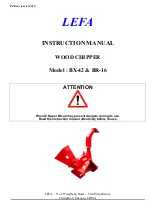
FORM 160.77-O1
ISSUE DATE: 10/22/2020
JOHNSON CONTROLS
10
SECTION 1 - SYSTEM FUNDAMENTALS
Tubes
Heat exchanger tubes are state-of-the-art, high-effi-
ciency, externally and internally enhanced type to pro-
vide optimum performance. Tubes in both the evapora-
tor and condenser are 3/4” (19 mm) O.D. standard or
1” (25.4 mm) copper alloy and utilize the “skip-fin”
design, providing a smooth internal and external sur-
face at each intermediate tube support. This provides
extra wall thickness (nearly twice as thick) and non
work-hardened copper at the support location, extend-
ing the life of the heat exchangers. Each tube is roller
expanded into the tube sheets providing a leak-proof
seal, while still individually replaceable.
Evaporator
The evaporator is a shell and tube, flooded type heat
exchanger. A distributor trough provides uniform dis-
tribution of refrigerant over the entire shell length to
yield optimum heat transfer. A suction baffle or alu-
minum mesh eliminators are located above the tube
bundle to prevent liquid refrigerant carryover into the
compressor. A 1 1/2” (38 mm) liquid level sight glass
is conveniently located on the side of the shell. The
evaporator shell contains a dual refrigerant relief valve
arrangement set at 180 psig (12.4 barg); or single-relief
valve arrangement, if the chiller is supplied with the
optional refrigerant isolation valves. A 1” (25.4 mm)
refrigerant charging valve is provided.
Condenser
The condenser is a shell and tube type, with a discharge
gas baffle to prevent direct high velocity impingement
on the tubes. The baffle is also used to distribute the
refrigerant gas flow properly for most efficient heat
transfer. An optional cast steel condenser inlet diffuser
may be offered in lieu of the baffle, to provide dynamic
pressure recovery and enhanced chiller efficiency. An
integral subcooler is located at the bottom of the con-
denser shell providing highly effective liquid refriger-
ant subcooling to provide the highest cycle efficiency.
The condenser contains dual refrigerant relief valves
set at 235 psig (16.2 barg).
Water Boxes
The removable water boxes are fabricated of steel. The
design working pressure is 150 psig (10.3 barg) and
the boxes are tested at 225 psig (15.5 barg). Integral
steel water baffles are located and welded within the
water box to provide the required pass arrangements.
Stub out water nozzle connections with ANSI/AWWA
C-606 grooves are welded to the water boxes. These
nozzle connections are suitable for ANSI/AWWA
C-606 couplings, welding or flanges, and are capped
for shipment. Plugged 3/4” (19 mm) drain and vent
connections are provided in each water box.
Water Flow Switches
Thermal type water flow switches are factory mounted
in the chilled and condenser water nozzles, and are fac-
tory wired to the control panel. These solid state flow
sensors have a small internal heating-element. They use
the cooling effect of the flowing fluid to sense when
an adequate flow rate has been established. The sealed
sensor probe is 316 stainless steel, which is suited for
very high working pressures.
Refrigerant Flow Control
Refrigerant flow to the evaporator is controlled by the
YORK variable orifice control system. Liquid refrig-
erant level is continuously monitored to provide op-
timum subcooler, condenser, and evaporator perfor-
mance. The variable orifice electronically adjusts to
all real-world operating conditions, providing the most
efficient and reliable operation of refrigerant flow con-
trol.
Optional Service Isolation Valves
If your chiller is equipped with optional service iso-
lation valves on the discharge and liquid line, these
valves must remain open during operation. These
valves are used for isolating the refrigerant charge in
either the evaporator or condenser to allow service ac-
cess to the system. A refrigerant pump-out unit will be
required to isolate the refrigerant.
Isolation of the refrigerant in this system
must be performed by a qualified service
technician.
Optional Hot Gas Bypass
The optional hot gas bypass is used to provide greater
turndown than otherwise available for load and head
conditions. The Control Center will automatically
modulate the hot gas valve open and closed as re-
quired. Adjustment of the hot gas control valve must
only be performed by a qualified service technician.











































